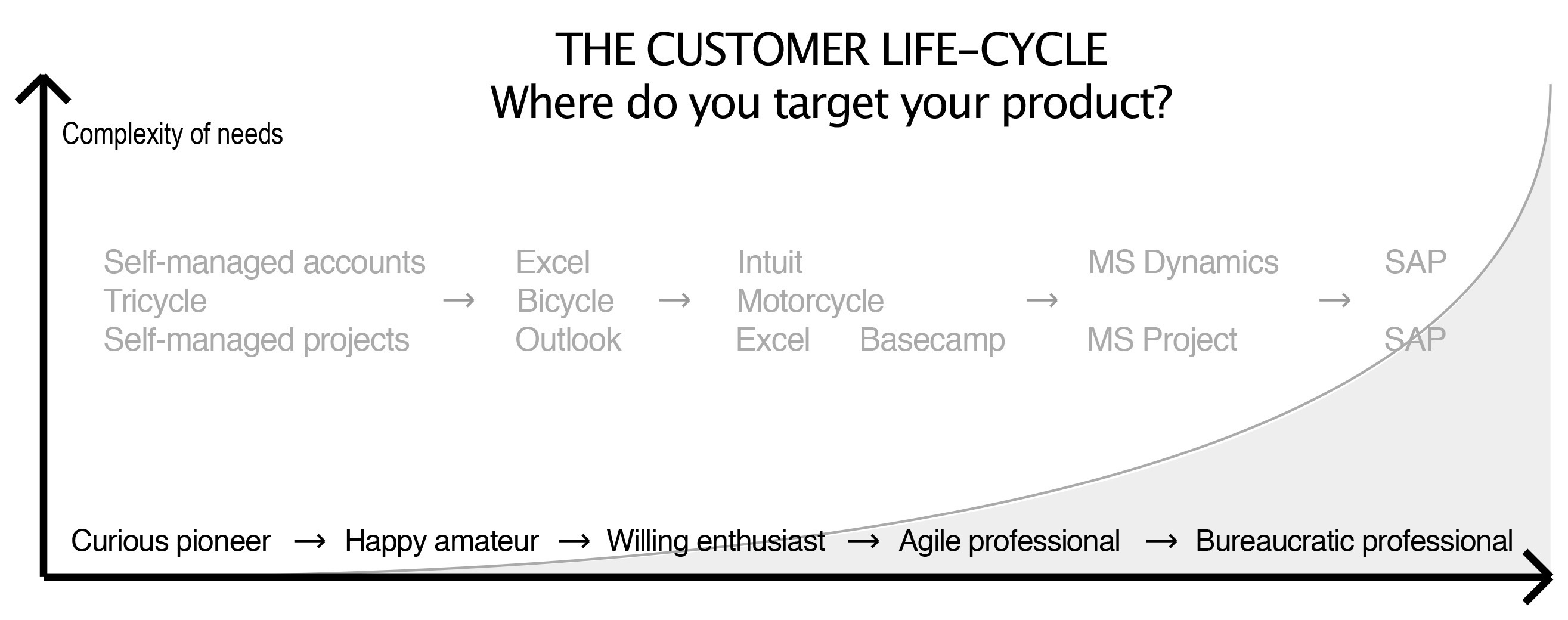The product-life-cycle is a well known phenomenon that explains users’ adoption of new technology and by that also your product. The early adaptors are willing to pay a high price to be the first to play with new technology while the price is forced down when your product hits the mainstream due to fierce competition from the companies that lured on your product for new pray.
A far too overlooked life-cycle is the one of the user. A user of your product will only use it as long as it fits his or her needs. A user today might not have the same demands and needs of a product that he or she has tomorrow. The demands change over time as the life-cycle moves along.
A good example of such a life-cycle are the one of bloggers. Many bloggers start their activities using a free blog service like blogger.com or wordpress.com. Over time the demands of the blogger to the chosen service changes as the popularity grows and wish to earn money on advertising kicks in. This is a good time for the blogger to buy a domain and setup a new specialized blog for himself. Later in the life-cycle the blogger might even wish to turn his or her website into a magazine or other kind of specialized website.
Another example a company looking for help to manage their finances. In the beginning, at site like quickbooks.com might do the job perfectly, but as the company grows, the company might have needs that demand a more complex solution that might not even be on the web. Later on, this solution might even be discarded for something even more complex like MS Dynamics, or at a later stage, SAP.
Users are aware that their needs change over time, why they do not plan to stick with your product forever. With this in mind, you might actually want to consider making it easier for your users to switch phases. If you run a blog platform or a financial web application, make it easy to import and export data from and to other applications. Making it easy to import data makes immediate sense to most, as you of course want to lure users in to your machinery in order to milk them for money from now till forever. Sadly, however, you will never be able to lure anybody in to your machinery forever. Your users’ exit is inevitable at some point.
Make sure that you provide your users with an exit strategy from the beginning. This will lower the barriers for a user to sign up.
Where does your product fit in to your users’ – or customer’s life-cycle?
1. Curious pioneer
2. Happy amateur
3. Willing enthusiast
4. Agile professional
5. Bureaucratic professional
The user is your customer
Users are aware that their needs change over time, why they do not plan to stick with your product forever.



1 comment
Custom Website Redesign on Aug 28, 2009
Is a strategy of catering to all these stages the best one or just catering to one of the stages and offering affiliate services for the other ones a good idea? Or does it just depends on the business scope?
Comments have been closed